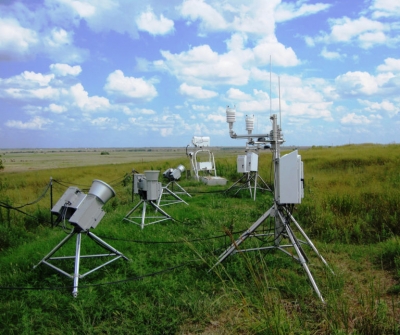ARM Southern Great Plains Data Contribute to Consequential Methane Research
Published: 6 April 2018

Scientists have directly measured the increasing greenhouse effect of methane at the Earth’s surface for the first time.
Researchers tracked a rise in the warming effect of methane over a 10-year period at the ARM Climate Research Facility’s Southern Great Plains atmospheric observatory.
These findings were published online April 2 in the journal Nature Geoscience in an article entitled “Observationally derived rise in methane surface forcing mediated by water vapour trends.” The paper indicates that the greenhouse effect from methane tracked the global pause in methane concentrations in the early 2000s and began to rise at the same time that the concentrations began to rise in 2007.
The scientists analyzed highly calibrated long-term measurements to isolate the changing greenhouse effect of methane. They did this by looking at measurements over the wavelengths at which methane is known to exert its greenhouse effect and coupled those with a suite of other atmospheric measurements to control for other confounding factors, including water vapor.
This study was enabled by the comprehensive measurements of the Earth’s atmosphere that the U.S. Department of Energy has routinely collected for decades at its ARM observatories, and conversely, would not be possible without such detailed observations.
For more information, read the Lawrence Berkeley National Laboratory news release.
The ARM Climate Research Facility is a DOE Office of Science user facility. The ARM Facility is operated by nine DOE national laboratories, including Lawrence Berkeley National Laboratory.
Keep up with the Atmospheric Observer
Updates on ARM news, events, and opportunities delivered to your inbox
ARM User Profile
ARM welcomes users from all institutions and nations. A free ARM user account is needed to access ARM data.


















